Research and Policy Briefs
-
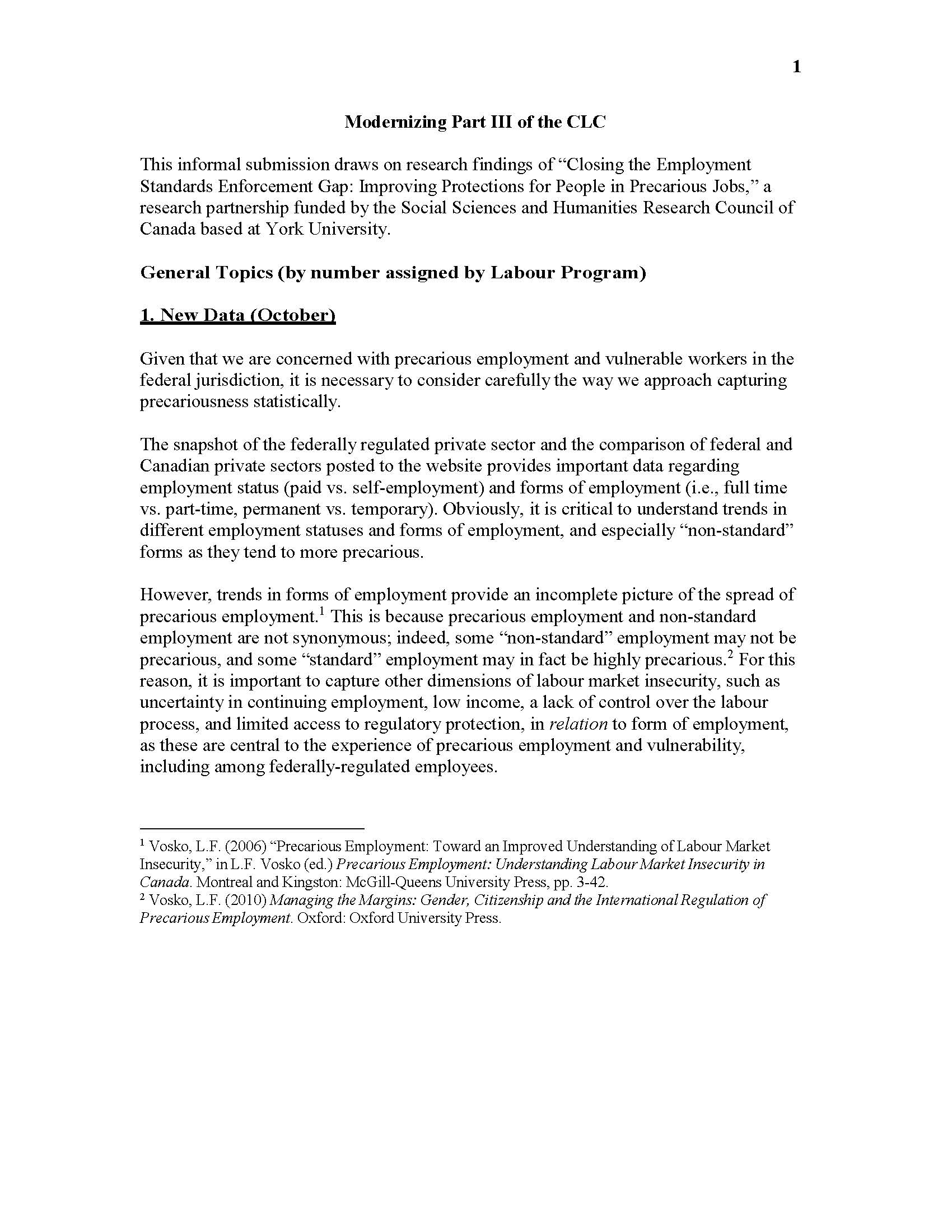 Modernizing Part III of the Canada Labour Code (CLC)
Modernizing Part III of the Canada Labour Code (CLC)This submission to the Canada Labour Programme's review of the Canada Labour Code draws on research findings of Closing the Employment Standards Enforcement Gap: Improving Protections for People in Precarious Jobs.
-
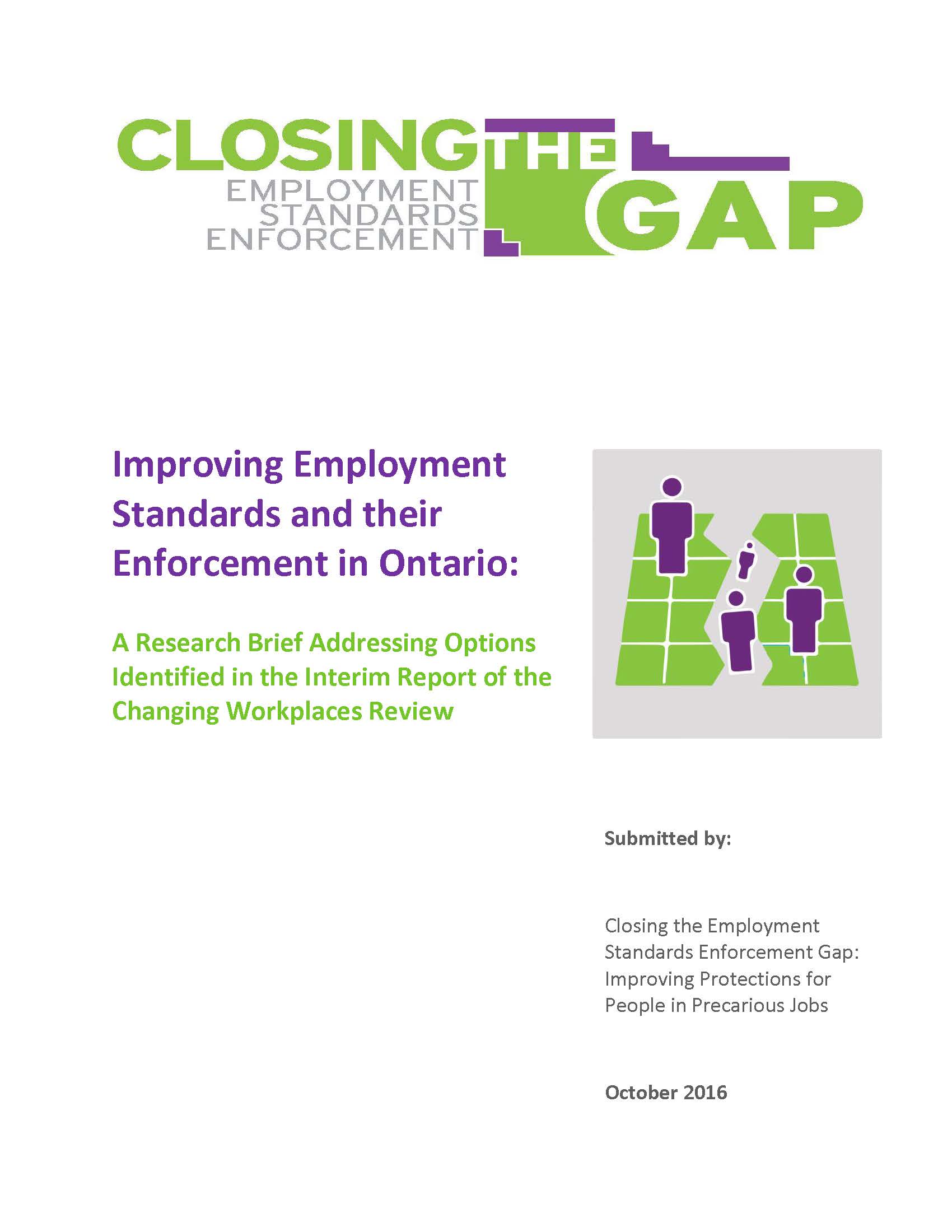 Improving Employment Standards and their Enforcement in Ontario: A Research Brief Addressing Options Identified in the Interim Report of the Changing Workplaces Review
Improving Employment Standards and their Enforcement in Ontario: A Research Brief Addressing Options Identified in the Interim Report of the Changing Workplaces ReviewThis research brief presents a detailed and evidence-based assessment of the options set out in the Interim Report of the Changing Workplaces Review for reforming Ontario’s Employment Standards Act as well as aspects of Ontario’s Labour Relations Act. The brief draws on findings of “Closing the Employment Standards Enforcement Gap: Improving Protections for People in Precarious Jobs” based on primary research, evidence from other jurisdictions, and secondary scholarly literature and policy analysis.
-
 Personal Emergency Leave: A Research Brief Addressing Options Identified in the Interim Report of the Changing Workplaces Review
Personal Emergency Leave: A Research Brief Addressing Options Identified in the Interim Report of the Changing Workplaces ReviewThe Interim Report of the Changing Workplace Review released on July 26, 2016 sets out four options for reforming the Personal Emergency Leave (PEL) provisions of the Employment Standards Act and is seeking public input on the alternatives posed. Prepared by researchers affiliated with the research partnership “Closing the Enforcement Gap: Improving Protections for People in Precarious Jobs,” this research brief responds to this call for input drawing upon both preliminary findings of our research, evidence from other jurisdictions, and scholarly literature and policy analysis on the subject of PEL.
-
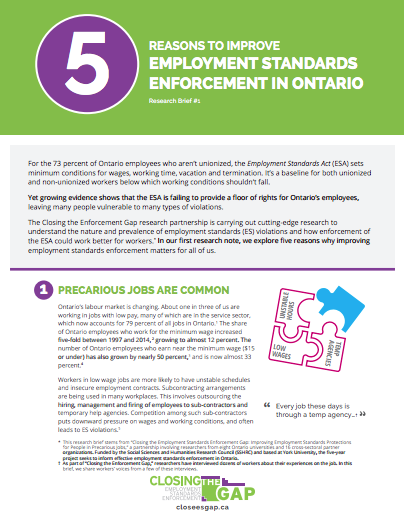 Five Reasons to Improve Employment Standards Enforcement in Ontario
Five Reasons to Improve Employment Standards Enforcement in OntarioGrowing evidence shows that the Employment Standards Act is failing to provide a floor of rights for Ontario’s employees, leaving many people vulnerable to many types of violations. In our first research note, we explore five reasons why improving employment standards enforcement matters for all of us.
Books and Articles
-
 Who to Inspect? Using Employee Complaint Data to Inform Workplace Inspections in Ontario
Who to Inspect? Using Employee Complaint Data to Inform Workplace Inspections in OntarioNoack, Andrea M., Alice Hoe, and Leah F. Vosko (2020). Canadian Public Policy. 46, 3 (September): 429-433.
In Ontario, as in many other jurisdictions, employment standards enforcement includes reactively investigating employee complaints and, to a lesser extent, proactively inspecting workplaces. Analyses of administrative data from Ontario’s Ministry of Labour (MOL) show that the use of complaint data to inform workplace inspections is quite limited. Strict adherence to the MOL’s procedures for workplace inspections is not conducive to the investigation of some of the most common empirical complaints. Accordingly, we argue for more strategic enforcement by making greater use of complaint data to guide workplace inspections triggered by complaints and for the increased use of penalties in these inspections.
Keywords: employment standards, Ontario, strategic enforcement, workplace inspections
-
 What We Owe Workers as a Matter of Common Humanity: Sickness and Caregiving Leaves and Pay in the Age of Pandemics
What We Owe Workers as a Matter of Common Humanity: Sickness and Caregiving Leaves and Pay in the Age of PandemicsTucker, Eric, Leah F. Vosko, and Sarah M. Marsden (2020). Osgoode Hall Law Journal. 57(3): 665-704.
COVID-19 has exposed how poorly workers in Canada are protected. Gaps in sickness and caregiving leaves are particularly problematic in a pandemic where staying home when sick or caring for others who are sick can help stop the spread of a highly contagious virus. This article examines sickness and caregiving leaves from a feminist political economy framework, asking what we owe workers as a matter of common humanity. It lays out options for transformative alternatives built upon the principles of universality, sufficiency, security, and flexibility.
Open access: https://digitalcommons.osgoode.yorku.ca/ohlj/
-
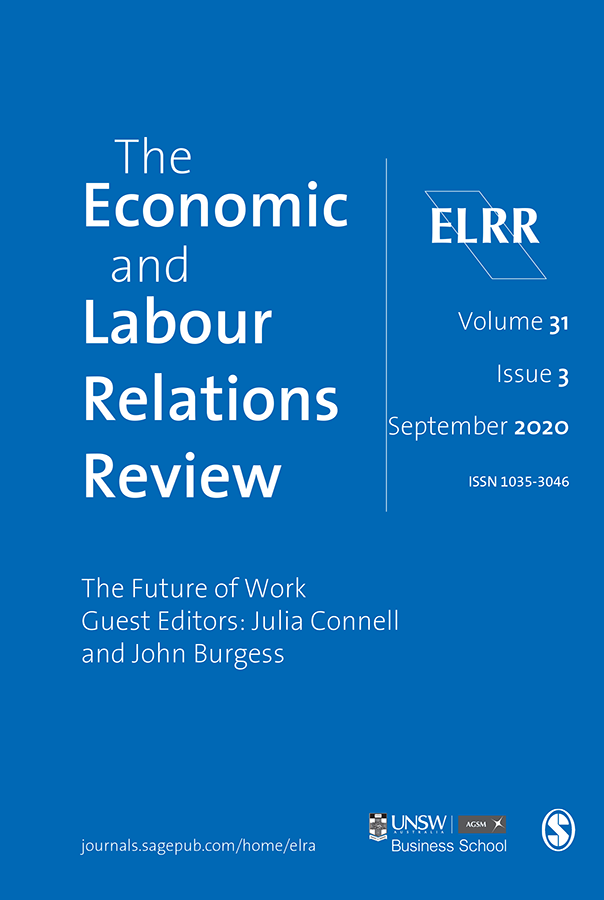 Are franchisees more prone to employment standards violations than other businesses? Evidence from Ontario, Canada
Are franchisees more prone to employment standards violations than other businesses? Evidence from Ontario, CanadaEaston, Mark, Andrea M. Noack, and Leah F. Vosko (2020). Economic and Labour Relations Review. Vol/issue/pg not yet available.
Using an administrative dataset from the Ontario Ministry of Labour, we investigate three hypotheses about employment standards violations among franchised businesses:.(1) franchisees have a higher probability of violating employment standards than other businesses, (2) franchisees have a higher probability of monetary/wage-related ES violations than other businesses, and (3) franchisees have a lower probability of repaying monetary/wage-related violations than other businesses. The results of our statistical models suggest that overall, franchisees are indeed more likely to violate ES, have a higher probability of monetary/wage-related violations, and are less likely to repay such violations. However, the results vary substantially by industry. While franchisees had only marginally higher probabilities of an ES violation in two of the seven industry groups examined, five of the seven industries showed substantially higher probabilities of a monetary violation. The results also show that franchisees in three industry groups (retail, accommodation and food services, and education, public administration, healthcare and social services) are particularly prone to monetary violations.
-
 Flexibility for Who? Working Time, the Ontario Employment Standards Act and the Experiences of Workers in Low-Wage and Precarious Jobs
Flexibility for Who? Working Time, the Ontario Employment Standards Act and the Experiences of Workers in Low-Wage and Precarious JobsThomas, Mark P., Shelley Condratto, Danielle Landry, and Mercedes Steedman. (Winter 2020). “Flexibility for Who? Working Time, the Ontario Employment Standards Act and the Experiences of Workers in Low-Wage and Precarious Jobs.” Relations industrielles/Industrial Relations 75(1): 3-189.
In Ontario, hours of work and overtime standards are regulated by the Employment Standards Act (ESA). This legislation covers most employers and employees in the province. As part of an ESA reforms process designed to promote workplace flexibility and enhance competitiveness, the Ontario ESA (2000) allowed for the extension of weekly maximum hours from 48 to 60, and the calculation of overtime pay entitlements to be based on an averaging of hours of work over up to a four-week period.
Situated in the context of shifts towards greater working time flexibility, this paper examines the dynamics of working time regulation in the Ontario ESA, with a specific focus on the regulation of excess and overtime hours. The paper considers these processes in relation to general trends towards forms of labour market regulation that support employer-oriented flexibility and that download the regulation of employment standards to privatized negotiations between individual employees and their employers, tendencies present in the ESA that were sustained through further reforms introduced in 2018 and 2019.
The paper draws its analysis from interviews with both workers in precarious jobs and Employment Standards Officers from the Ontario Ministry of Labour (MOL), as well as administrative data from the MOL and archival records. In the general context of the rise of precarious employment, the paper argues that ESA hours of work and overtime provisions premised upon creating working time flexibility enhance employer control over time, exacerbate time pressures and uncertainty experienced by workers in precarious jobs, and thereby intensify conditions of precariousness. The article situates the working time provisions of Ontario’s ESA in the context of an ongoing fragmentation of the regulation of working time as legislated standards are eroded in ways that make workers in precarious jobs more vulnerable to employer exploitation.
-
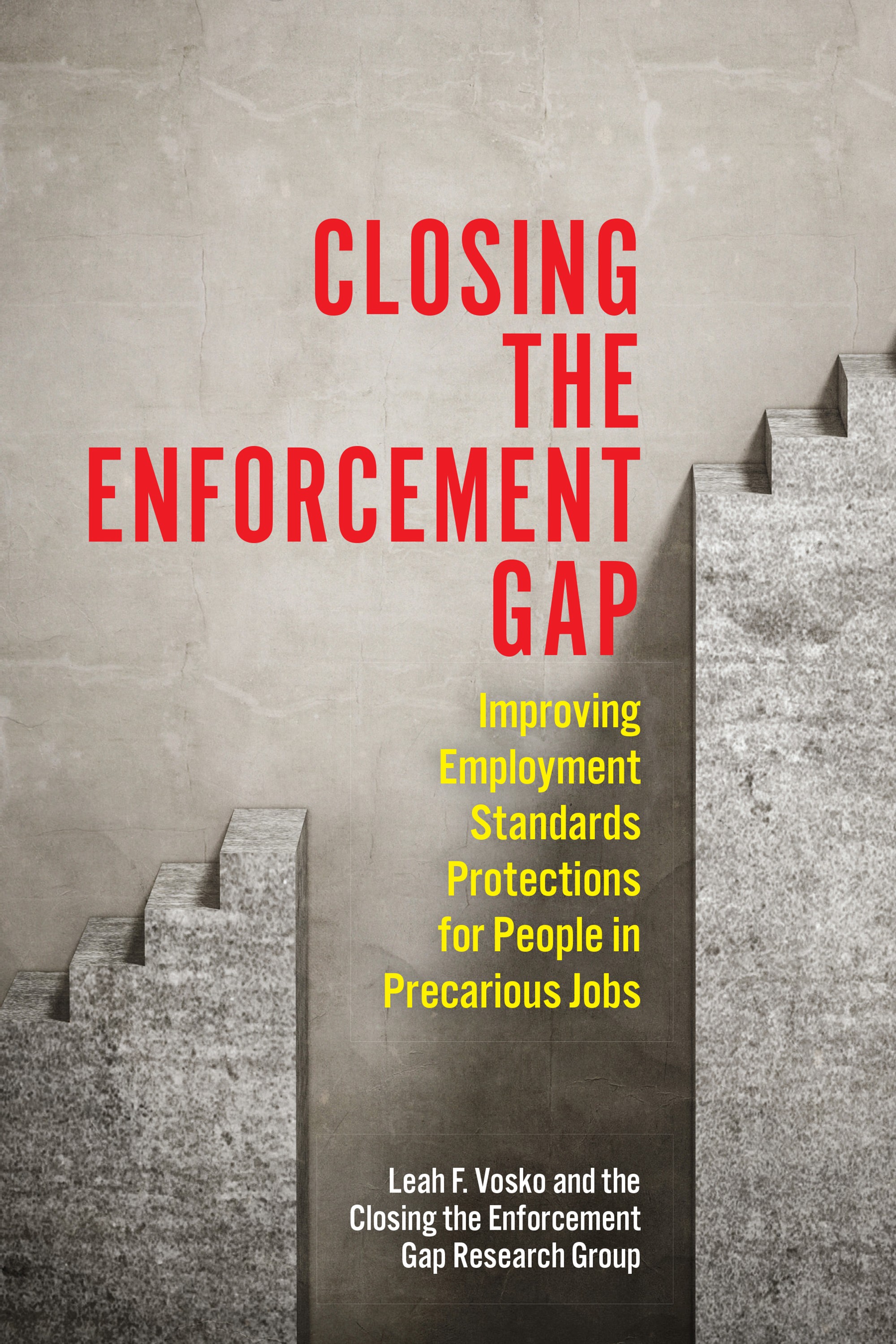 Closing the Enforcement Gap: Improving Protections for People in Precarious Jobs
Closing the Enforcement Gap: Improving Protections for People in Precarious JobsVosko, Leah F. and the Closing the Enforcement Gap Team. 2020. Closing the Enforcement Gap: Improving Protections for People in Precarious Jobs. University of Toronto Press.
The nature of employment is changing: low wage jobs are increasingly common, fewer workers belong to unions, and workplaces are being transformed through the growth of contracting-out, franchising, and extended supply chains. Closing the Enforcement Gap offers a comprehensive analysis of the enforcement of employment standards in Ontario.
Adopting mixed methods, this work includes qualitative research involving in-depth interviews with workers, community advocates, and enforcement officials; extensive archival research excavating decades of ministerial records; and analysis of a previously untapped source of administrative data collected by Ontario’s Ministry of Labour. The authors reveal and trace the roots of a deepening "enforcement gap" that pervades nearly all aspects of the regime, demonstrating that the province’s Employment Standards Act (ESA) fails too many workers who rely on the floor of minimum conditions it was devised to provide. Arguably, there is nothing inevitable about the enforcement gap in Ontario or for that matter elsewhere. Through contributions from leading employment standards enforcement scholars in the US, the UK, and Australia, as well as Quebec, Closing the Enforcement Gap surveys innovative enforcement models that are emerging in a variety of jurisdictions and sets out a bold vision for strengthening employment standards enforcement.
Closing the Enforcement Gap Research Group
Leah F. Vosko
Guliz Akkaymak
Rebecca Casey
Shelley Condratto
John Grundy
Alan Hall
Alice Hoe
Kiran Mirchandani
Andrea M. Noack
Urvashi Soni-Sinha
Mercedes Steedman
Mark P. Thomas
Eric M. TuckerInternational/Quebec Contributors
Nick Clark
Dalia Gesualdi-Fecteau
Tess Hardy
John Howe
Guylaine Vallée
David Weil -
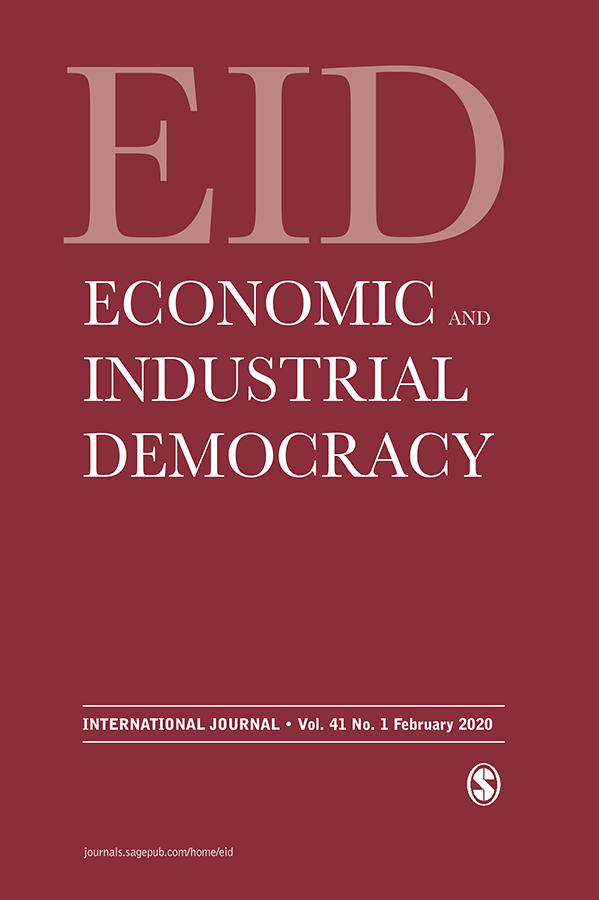 Dealing with ‘vulnerable workers’ in precarious employment: Front-line constraints and strategies in employment standards enforcement
Dealing with ‘vulnerable workers’ in precarious employment: Front-line constraints and strategies in employment standards enforcementHall, Alan, Rebecca Hall, and Nicole Bernhardt. “Dealing with ‘vulnerable workers’ in precarious employment: Front-line constraints and strategies in employment standards enforcement." (2020). Economic and Industrial Democracy. Currently online only.
Individual worker complaints continue to be the core foundation of employment standards enforcement in many Western jurisdictions, including the Canadian province of Ontario. In the contemporary labour market context where segments of the labour force may be disproportionately impacted by rights violations, and employment relationships are more diverse and often more tenuous than previously, the continued reliance on individual claims suggests a need to better understand the challenges associated with the investigation and resolution of claims involving ‘vulnerable workers’ in precarious employment situations. Using interviews with front-line Ontario employment standards officers (ESOs), this article examines the extent to which certain worker characteristics and employment situations perceived by officers as ‘vulnerable’ are identified by officers as significant constraints or barriers to investigation processes and outcomes, and documents whether and how officers address these constraints and barriers. The analysis also identifies the perceived influence of policy, resource and legislative requirements in shaping how officers deal with the more difficult and challenging cases, while also considering the extent to which the officers’ actions are understood by them as discretionary and guided by their particular orientations or concerns. In so doing, this article reveals challenges to the resolution of claims in precarious employment situations, the very place where employment standards are often most needed.
-
 The Devil’s Choice: Precarious Work and the Politics of Time
The Devil’s Choice: Precarious Work and the Politics of TimeThomas, Mark, Shelley Condratto, Mercedes Steedman, Danielle Landry. (Winter 2019-2020). “The Devil’s Choice: Precarious Work and the Politics of Time.” Our Times. Pg. 32.
-
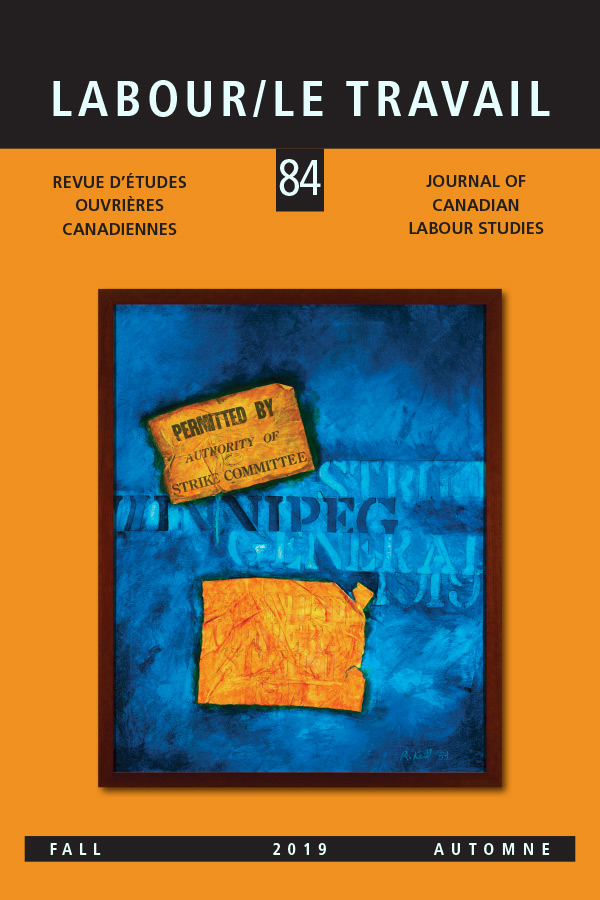 The Employment Standards Enforcement Gap and the Overtime Pay Exemption in Ontario
The Employment Standards Enforcement Gap and the Overtime Pay Exemption in OntarioThomas Mark, Leah F. Vosko, Eric Tucker, Mercedes Steedman, Andrea M. Noack, John Grundy, Mary Gellatly, and Lisa Leinveer (Fall 2019). “The Employment Standards Enforcement Gap and the Overtime Pay Exemption in Ontario.” Labour/Le travail 84: 25-53.
Employment Standards (ES) legislation sets minimum terms and conditions of employment in areas such as wages, working time, vacations and leaves, and termination and severance. ES legislation is designed to provide minimum workplace protections, in particular, for those with little bargaining power in the labour market. In practice, however, ES legislation includes ways in which legislated standards may be avoided, including through exemptions that exclude specified employee groups, fully or partially, from legislative coverage. With a focus on the Ontario Employment Standards Act, this paper develops a case study of exemptions to the Overtime Pay provision of the Act and regulations and examines in closer detail three particular areas in which exemptions apply. Through this study of the Overtime Pay exemption, the system of exemptions is presented as a contradictory approach to the regulation of ES that, in effect, reduces ES coverage, contributes to the avoidance of key legislated standards, and undermines the goal of providing protection for workers in precarious jobs. -
Enforcing employment standards for temporary migrant agricultural workers in Ontario, Canada: Exposing underexplored layers of vulnerability
Vosko, Leah F., Eric Tucker, and Rebecca Casey. “Enforcing employment standards for temporary migrant agricultural workers in Ontario, Canada: Exposing underexplored layers of vulnerability.” (2019). International Journal of Comparative Labour Law and Industrial Relations 35(2): 227-254.
Over 50,000 migrant agricultural workers are employed in Canada each year, almost half of whom are destined for the Province of Ontario. These workers are among the most vulnerable in the country and therefore most in need of labour and employment law protection. One important source of employment rights in Ontario is the Employment Standards Act (ESA), which establishes basic minimum entitlements in areas such as wages, working time, and vacations and leaves. Drawing on an analysis of the Ontario Ministry of Labour’s (MOL’s) Employment Standards Information System (ESIS), a previously untapped administrative data source containing information on all of Ontario’s employment standards (ES) enforcement activities and their outcomes, this article investigates the enforcement of ES among migrant agricultural workers. After offering a few methodological caveats, the analysis unfolds in three parts beginning, in Part I, by setting the stage with a discussion of the layers of vulnerability that combine to construct migrant agricultural workers as an extreme case. Against this backdrop, Part II describes agricultural workers’ limited entitlements under the ESA and the Act’s complaint-based enforcement regime, which produces, for workers in general, a gap between rights on the books and in practice. Part III then looks more specifically at ES enforcement among agricultural workers, focusing, where possible, on the situation of those that are migrants and illustrating how a complaint-based enforcement regime and an under resourced and poorly targeted inspectorate is ill-suited to the realization of rights among this group.
-
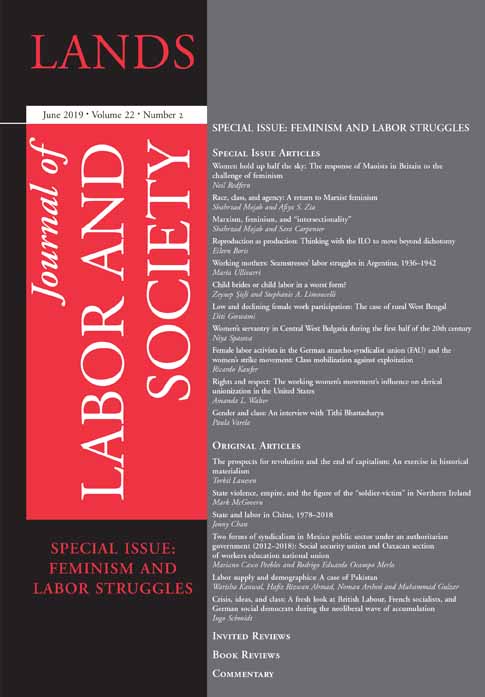 Roundabout wage theft: The limits of regulatory protections for Ontario workers in precarious jobs
Roundabout wage theft: The limits of regulatory protections for Ontario workers in precarious jobsMirchandani, Kiran and Sheldon Bromfield (2019). “Roundabout wage theft: The limits of regulatory protections for Ontario workers in precarious jobs.” Journal of Labor and Society (volume unavailable): 1-17.
This article focuses on wage theft experienced by workers in precarious jobs in Ontario, Canada. Workers report that employers utilize subtle forms of wage theft, which one respondent in this study described as “roundabout” wage theft. We argue that the enforcement of the Employment Standards Act requires not only action on overt wage theft but also a proactive approach which challenges employers' subtle practices which result in wage theft. We highlight two sets of practices resulting in wage theft, although these may not always in themselves represent violations of the law. First, employers use discourses of futurity where promises of future work or payment are evoked to deter employee action on unpaid wages. Second, employers set up confusing payment structures which mask unpaid wages as difficult-to-detect errors.
-
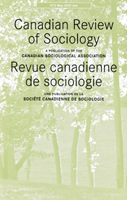 Complaints-Based Entrepreneurialism: Worker Experiences of the Employment Standards Complaints Process in Ontario, Canada
Complaints-Based Entrepreneurialism: Worker Experiences of the Employment Standards Complaints Process in Ontario, CanadaMirchandani, Kiran, Mary Jean Hande, and Shelley Condratto (2019). “Complaints-Based Entrepreneurialism: Worker Experiences of the Employment Standards Complaints Process in Ontario, Canada.” The Canadian Review of Sociology 56(3): 347-367.
In Ontario, workers who face unfair working conditions have the option of filing an official complaint with the Ministry of Labour. Complaints making is characterized as a widely available, easily accessible, and free-of-cost avenue for workers who may have experienced a violation of the law. However, interviews with Ontario workers who have filed complaints tell a different story. This paper is based on a community-university project on the enforcement of the Employment Standards Act in Ontario. We draw on 36 interviews with workers employed in precarious jobs in Sudbury, Toronto, and Windsor, who filed complaints to the Ministry. Workers characterize the complaints process as rife with bureaucratic complexity, risk, and unsuccessful payouts. Their experiences shed light on the efficacy of complaint-based approaches that are often promoted as a form of “bottom-up” enforcement of employment standards (ES). We demonstrate that the current ES complaints system requires workers to enact neoliberal entrepreneurialism (rather than agentic or collective entrepreneurialism) creating a highly stressful, enormously time-consuming, and demoralizing experience. We document the increasingly individualized and contradictory avenues through which workers must act as entrepreneurs to navigate and self-advocate when their rights have been violated. We argue that the current complaint processes limit the potentially empowering impact of this strategy.
-
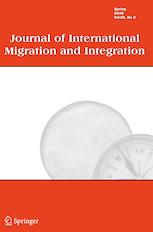 "All of This Happens Here": Diminishing Perceptions of Canada through Immigrants’ Precarious Work in Ontario
"All of This Happens Here": Diminishing Perceptions of Canada through Immigrants’ Precarious Work in OntarioHande, Mary Jean Hande, Ayesha Mian Akram, and Shelley Condratto. Journal of International Migration and Integration. Not yet assigned volume, issue. June 2019.
Prior to entering Canadian workplaces, immigrants generally expect strong legislative protections based on Canada’s global reputation for equity and equality as reported by Hardwick and Mansfield (Annals of the Association of American Geographers, 99(2), 383-405, 2009). However, after exposure to poor working conditions, employment standards (ES) violations, and challenges with filing claims for recompense, immigrant workers’ perceptions of work in Canada often diminish significantly. Although scholars have explored Canadian immigrants’ experiences with unemployment and poor working conditions, little research has uncovered the effects of these experiences on their shifting perceptions of Canada and their overall experience of adjusting to a new life in Canada. Our narrative data, collected in Ontario, Canada, reveals (1) the exploitation of immigrant workers’ perceived limited access to and knowledge of workplace rights and (2) limited access to employment opportunities and protections for immigrant workers. These two factors lead to workers’ diminishing perceptions of Canada as they navigate poor working conditions on the precarity track according to Goldring and Landolt (Goldring and Landolt 2013). This analysis offers insight into the everyday experiences of immigrant workers and the impacts of precarious employment on perceptions of Canada.
-
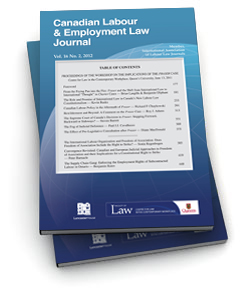 A Tattered Quilt: Exemptions and Special Rules under Ontario's Employment Standards Act
A Tattered Quilt: Exemptions and Special Rules under Ontario's Employment Standards ActVokso, Leah F., John Grundy, Rebecca Casey, Andrea M. Noack, and Mark P. Thomas (2019). Canadian Labour & Employment Law Journal 21(2): 267-298.
The development of employment standards legislation in Ontario has historically been shaped by a tension between the competing goals of establishing a minimum floor of protections for employees and minimizing interference with employers’ business practices. This tension has resulted in the establishment of numerous exemptions from the legislated minimum standards based on the perceived needs of particular industries, sectors or occupational groups. The growth of the patchwork of exemptions has been accompanied in recent decades by the spread of precarious employment, with particular effects on women, recent immigrants, and young people. By examining specific occupations subject to an exemption from or special rule regarding the minimum wage, this article reveals the disproportionate costs of exemptions for certain groups of employees. Through an in-depth look at the cases of homecare employees, liquor servers, and agricultural employees, it demonstrates how exemptions and special rules can exacerbate insecurity for those in occupations characterized by high degrees of precariousness, and often otherwise subject to disadvantage in the labour force.
-
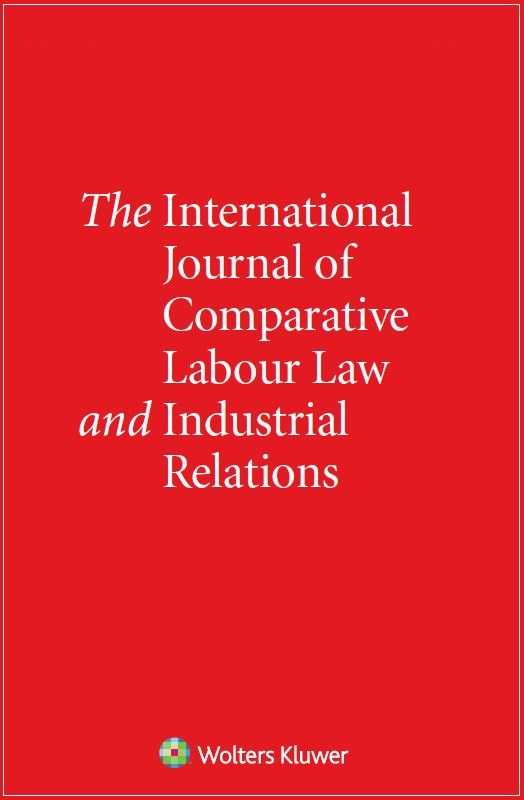 Carrying Little Sticks: Is There a ‘Deterrence Gap’ in Employment Standards Enforcement in Ontario, Canada
Carrying Little Sticks: Is There a ‘Deterrence Gap’ in Employment Standards Enforcement in Ontario, CanadaTucker, Eric; Leah F. Vosko, Rebecca Casey, Mark Thomas, John Grundy, and Andrea M. Noack (2019). International Journal of Comparative Labour Law 35(1): 1–30.
This article assesses whether a deterrence gap exists in the enforcement of the Ontario Employment Standards Act (ESA), which sets minimum conditions of employment in areas such as minimum wage, overtime pay and leaves. Drawing on a unique administrative data set, the article measures the use of deterrence in Ontario’s ESA enforcement regime against the role of deterrence within two influential models of enforcement: responsive regulation and strategic enforcement. The article finds that the use of deterrence is below its prescribed role in either model of enforcement. We conclude that there is a deterrence gap in Ontario.
-
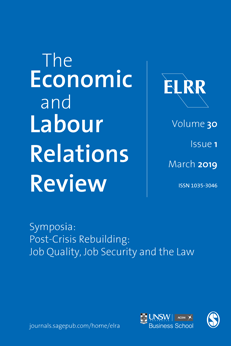 Using Tickets in Employment Standards Inspections: Deterrence as Effective Enforcement in Ontario, Canada
Using Tickets in Employment Standards Inspections: Deterrence as Effective Enforcement in Ontario, CanadaCasey, Rebecca, Eric Tucker, Leah F. Vosko, and Andrea M. Noack (2018). The Economic and Labour Relations Review 29(2): 228–249.
It is widely agreed that there is a crisis in labour/employment standards enforcement. A key issue is the role of deterrence measures that penalise violations. Employment standards enforcement in Ontario, like in most jurisdictions, is based mainly on a compliance framework promoting voluntary resolution of complaints and, if that fails, ordering restitution. Deterrence measures that penalise violations are rarely invoked. However, the Ontario government has recently increased the role of proactive inspections and tickets, a low-level deterrence measure which imposes fines of CAD295 plus victim surcharges. In examining the effectiveness of the use of tickets in inspections, we begin by looking at this development in the broader context of employment standards enforcement and its historical trajectory. Then, using administrative data from the Ministry of Labour, we examine when and why tickets are issued in the course of workplace inspections. After demonstrating that even when ticketable violations are detected, tickets are issued only rarely, we explore factors associated with an increased likelihood of an inspector issuing a ticket. Finally, we consider how the overall deterrent effect of workplace inspections is influenced by the use or non-use of deterrence tools.
-
 Challenging New Governance: Evaluating New Approaches to Employment Standards Enforcement in Common Law Jurisdictions
Challenging New Governance: Evaluating New Approaches to Employment Standards Enforcement in Common Law JurisdictionsVosko, Leah F., John Grundy, and Mark P. Thomas (2016). Economic and Industrial Democracy 37(2): 373–398.
A mounting crisis in employment standards (ES) enforcement is prompting the adoption of new instruments and mechanisms among governments in common law jurisdictions aiming to improve workplace regulation. This shift, evident across all stages of the enforcement process, indicates the increasing influence of regulatory new governance. Using reforms in four jurisdictions as illustrative examples, this article raises serious cautions around the emergence of regulatory new governance in employment standards enforcement. The central argument of the article is that new modes of regulation that fail to account adequately for the power dynamics of the employment relationship risk entrenching processes of regulatory degradation. In light of this potential, the article outlines four principles for more effective ES regulation that aim to balance aspects of traditional regulatory models with a selective application of more promising elements of regulatory new governance, in particular participatory arrangements that involve workers in enforcement processes.
-
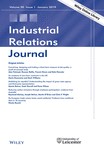 The Compliance Model of Employment Standards Enforcement: An Evidence-based Assessment of its Efficacy in Instances of Wage Theft
The Compliance Model of Employment Standards Enforcement: An Evidence-based Assessment of its Efficacy in Instances of Wage TheftVosko, Leah F., John Grundy, Eric Tucker, Mark P. Thomas, Andrea M. Noack, Rebecca Casey, Mary Gellatly, and Jennifer Mussell (2017). Industrial Relations Journal 48(3): 256–273.
This article critically assesses the compliance model of employment standards enforcement through a study of monetary employment standards violations in Ontario, Canada. The findings suggest that, in contexts where changes to the organisation of work deepen insecurity for employees, models of enforcement that emphasise compliance over deterrence are unlikely to effectively prevent or remedy employment standards violations.
-
 'Modernising’ Employment Standards? Administrative Efficiency and the Production of the Illegitimate Claimant in Ontario, Canada
'Modernising’ Employment Standards? Administrative Efficiency and the Production of the Illegitimate Claimant in Ontario, CanadaGellatly, Mary, John Grundy, Kiran Mirchandani, J. Adam Perry, Mark P. Thomas, and Leah F. Vosko (2011). The Economic and Labour Relations Review 22(2): 81–106.
In October 2010, the provincial government of Ontario, Canada enacted the Open for Business Act (OBA). A central component of the OBA is its provisions aiming to streamline the enforcement of Ontario’s Employment Standards Act (ESA). The OBA’s changes to the ESA are an attempt to manage a crisis of employment standards (ES) enforcement, arising from decades of ineffective regulation, by entrenching an individualised enforcement model. The Act aims to streamline enforcement by screening people assumed to be lacking definitive proof of violations out of the complaints process. The OBA therefore produces a new category of ‘illegitimate claimants’ and attributes administrative backlogs to these people. Instead of improving the protection of workers, the OBA embeds new racialized and gendered modes of exclusion in the ES enforcement process.
-
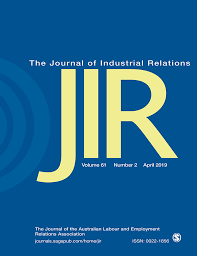 Confronting the Employment Standards Enforcement Gap: Exploring the Potential for Union Engagement with Employment Law in Ontario, Canada
Confronting the Employment Standards Enforcement Gap: Exploring the Potential for Union Engagement with Employment Law in Ontario, CanadaVosko, Leah F. and Mark P. Thomas (2014). Journal of Industrial Relations 56(5): 631–652.
Employment standards (ES) are legislated standards that set minimum terms and conditions of employment in areas such as wages, working time, vacations and leaves, and termination and severance. In Canada, the majority of workers rely on ES for basic regulatory protection; however, a significant ‘enforcement gap’ exists. In the province of Ontario, this enforcement gap has been exacerbated in recent years due to the deregulation of ES through inadequate funding, workplace restructuring, legislative reforms that place greater emphasis on individualized complaints processes and voluntary compliance, and a formal separation of unions from ES enforcement. The implications of these developments are that, increasingly, those in precarious jobs, many of whom lack union representation, are left with insufficient regulatory protection from employer non-compliance, further heightening their insecurity. Taking the province of Ontario as our focus, in this article we critically examine alternative proposals for ES enforcement, placing our attention on those that enhance the involvement of unions in addressing ES violations. Through this analysis, we suggest that augmenting unions’ supportive roles in ES enforcement holds the potential to enhance unions’ regulatory function and offers a possible means to support the ongoing efforts of other workers’ organizations to improve employer compliance with ES.
-
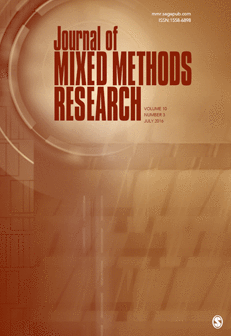 Methodological K/nots: Designing Research on the Enforcement of Labor Standards
Methodological K/nots: Designing Research on the Enforcement of Labor StandardsMirchandani, Kiran, Leah F. Vosko, Urvashi Soni-Sinha, J. Adam Perry, Andrea M. Noack, Rebecca Hall and Mary Gellatly (2016). Journal of Mixed Methods Research, 1-15.
This article traces methodological discussions of a multi-disciplinary team of researchers located in universities and community settings in Toronto, Ontario. The group designed and conducted a research project on the enforcement of labor standards in Ontario, Canada. Discussion of methodological possibilities often began with nots; that is, consensus on methodological approaches the team collectively rejected. Out of these discussions emerged suggestions and approaches through which we navigated dilemmas in research design. Three such knots are presented in this paper, specifically: [a] epistemological tensions around mixed methods and the politics of mixing; [b] the attempt to capture the relationships between research and its impact; and, [c] the need to develop interviews which both establish respondents as knowers, and simultaneously focus on that which is unsaid/ normalized.
-
 Making or Administering Law and Policy?: Discretion and Judgment in the Enforcement of Employment Standards in Ontario
Making or Administering Law and Policy?: Discretion and Judgment in the Enforcement of Employment Standards in OntarioTucker, Eric, Alan Hall, Leah F.Vosko, Rebecca Hall, Elliot Siemiatycki. (2015). Canadian Journal of Law & Society, 31(1): 65-86.
The purpose of this paper is to advance an approach to analyzing decision-making by front line public officials. The notion of discretion in front line decision-making has been examined widely in the law and society literature. However, it has often failed to capture the different kinds and levels of decisions that enforcement officials make. Taking an interdisciplinary approach that draws on political, sociological and legal analysis, we propose a new conceptual framework, one that draws a sharper distinction between discretion and judgment and teases out distinct levels in the scope and depth of decision-making. We then use this framework to create a conceptual map of the decision-making process of front line officials charged with enforcing the Employment Standards Act (ESA) of Ontario, demonstrating that a deeper, more precise, analysis of discretion and judgment can contribute to a richer understanding of front line decision-making and its social, political and legal implications.
-
 Measuring Employment Standards Violations, Evasion and Erosion using a Telephone Survey.
Measuring Employment Standards Violations, Evasion and Erosion using a Telephone Survey.Noack, Andrea, Leah F. Vosko and John Grundy. (2015). Industrial Relations/ Relations Industrielles. (equal first authorship with Noack), 70, 1: 86-109.
This article reports on efforts to develop a telephone survey that measures the overall prevalence of employment standards (ES) violations as well as their evasion and erosion in low-wage jobs in Ontario, without requiring that respondents have any pre-existing legal knowledge. The result is a survey instrument that is unique in the Canadian context and reflects the concerns of both academic researchers and workers’ rights activists. Pilot survey results show that Ontario workers do not necessarily distinguish between ES violations and other workplace grievances and complaints. With careful questionnaire design, it is nevertheless possible to measure the prevalence of ES violations, evasion and erosion. In order to track the effects of ES policies and their implementation, it will be crucial to establish baseline measures and standardized reporting tools.
-
 Liberating Temporariness
Liberating TemporarinessLeah F. Vosko, Valerie Preston, and Robert Latham (Eds.). McGill-Queen's University Press.
Liberating Temporariness? explores the complex ways in which temporariness is being institutionalized as a condition of life for a growing number of people worldwide. The collection emphasizes contemporary developments, but also provides historical context on nation-state membership as the fundamental means for accessing rights in an era of expanding temporariness - in recognition of why pathways to permanence remain so compelling.
-
 ‘Rights without Remedies’: Enforcing Employment Standards in Ontario by Maximizing Voice among Workers in Precarious Jobs
‘Rights without Remedies’: Enforcing Employment Standards in Ontario by Maximizing Voice among Workers in Precarious JobsVosko, Leah F. (2013). Osgoode Hall Law Journal. 50.4: 845-873.
Workers in Ontario, Canada are on the edge of a crisis in the enforcement of their minimum employment standards (ES). This crisis is shaped not only by well-documented deficiencies in the scope of labour protection but by the fact that the administration of the ES system has not kept pace with the increasing number of workers and workplaces requiring protection under the province’s employment standards act. Coupled with an outmoded complaint-based system, the dearth of support for ES enforcement is cultivating a situation in which an unprecedented number of workers are bearers of rights without genuine opportunities for redress. Responding to this situation, this article explores how measures augmenting the voices of workers and their advocates could contribute to improving ES enforcement in Ontario. It does so through a review of innovative practices in other common law contexts characterized by similar enforcement regimes where labour market conditions have likewise deteriorated.
Papers and Major Reports
-
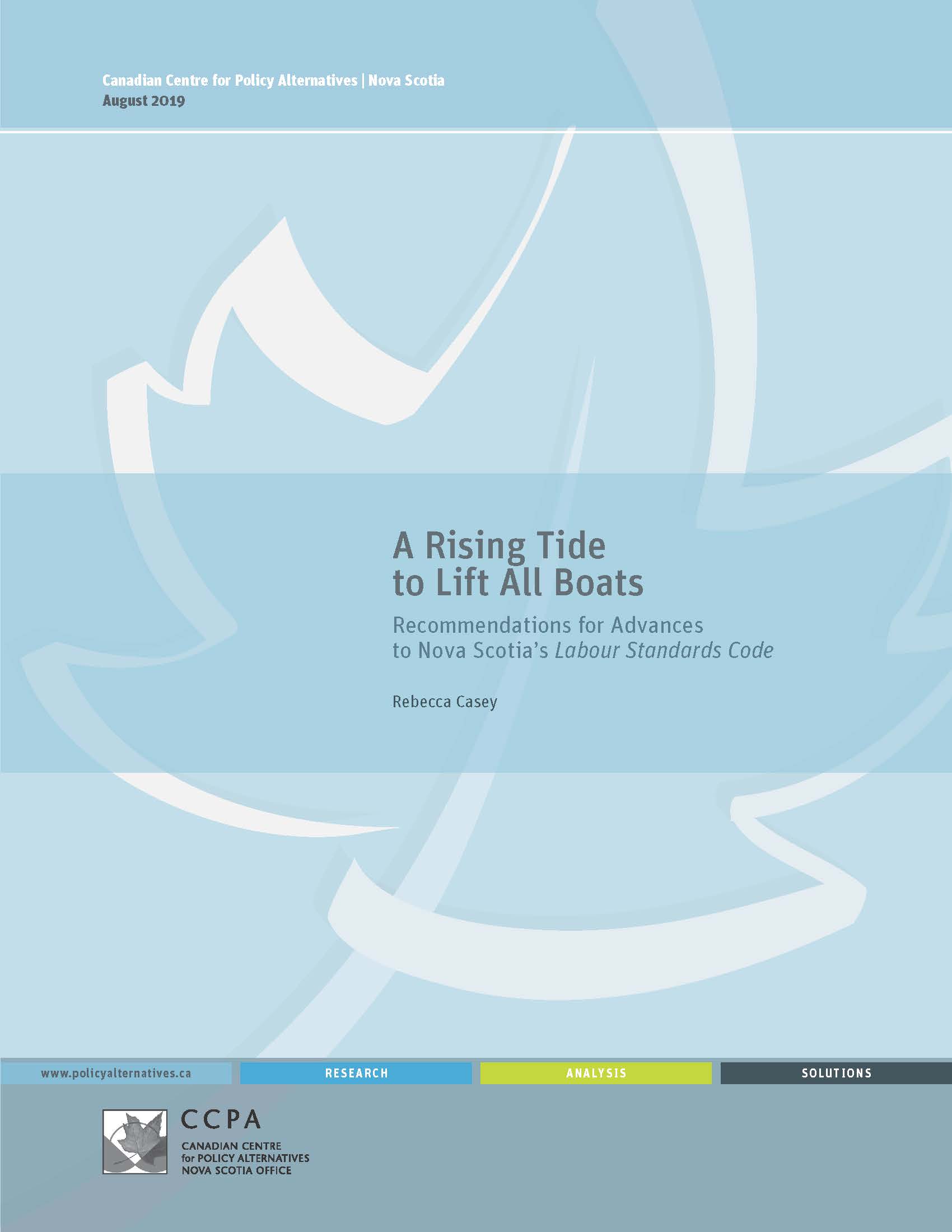 A Rising Tide to Lift All Boats: Recommendations for Advances to Nova Scotia's Labour Standards Code
A Rising Tide to Lift All Boats: Recommendations for Advances to Nova Scotia's Labour Standards CodeCasey, Rebecca. Canadian Centre for Policy Alternatives (Nova Scotia). August 2019.
This report examines Labour Standards in Nova Scotia and provides a macro-level comparison with other jurisdictions in Canada to determine where this province fits in the national picture. Labour Standards legislation provides a set of minimum terms and conditions to which employers must adhere. Many employees, especially in Nova Scotia and Ontario, are exempt or have special rules from certain aspects of the legislation or are exempt from the entire legislation.
-
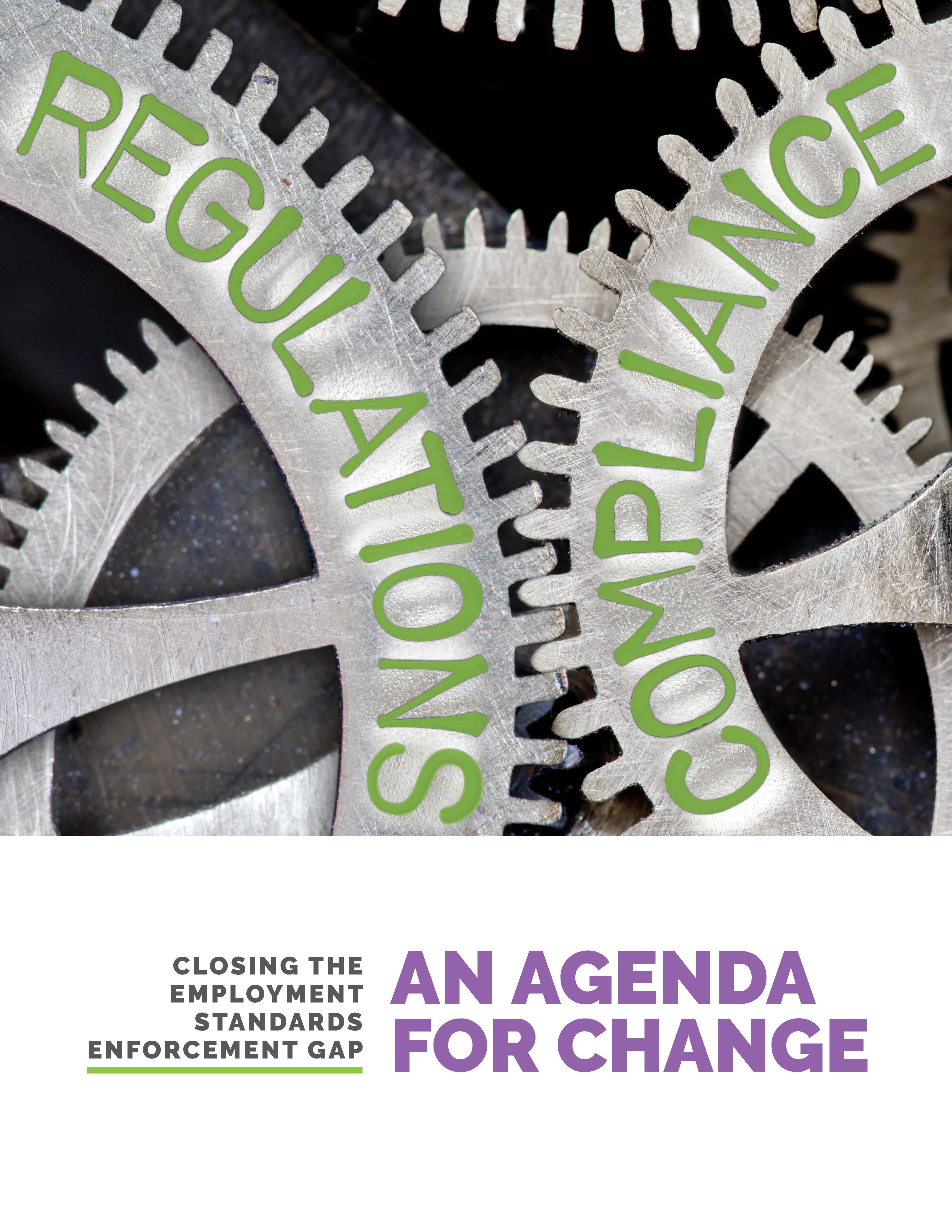 Closing the Employment Standards Enforcement Gap: An Agenda for Change
Closing the Employment Standards Enforcement Gap: An Agenda for ChangeThis report highlights the major findings to date of Closing the Employment Standards Enforcement Gap. It was prepared by Leah F. Vosko, John Grundy, Eric Tucker, Andrea M. Noack, Mary Gellatly, Rebecca Casey, Mark P. Thomas, Guliz Akkaymak, and Parvinder Hira-Friesen, and launched at the Closing the Gap Policy Forum on June 19, 2017.
-
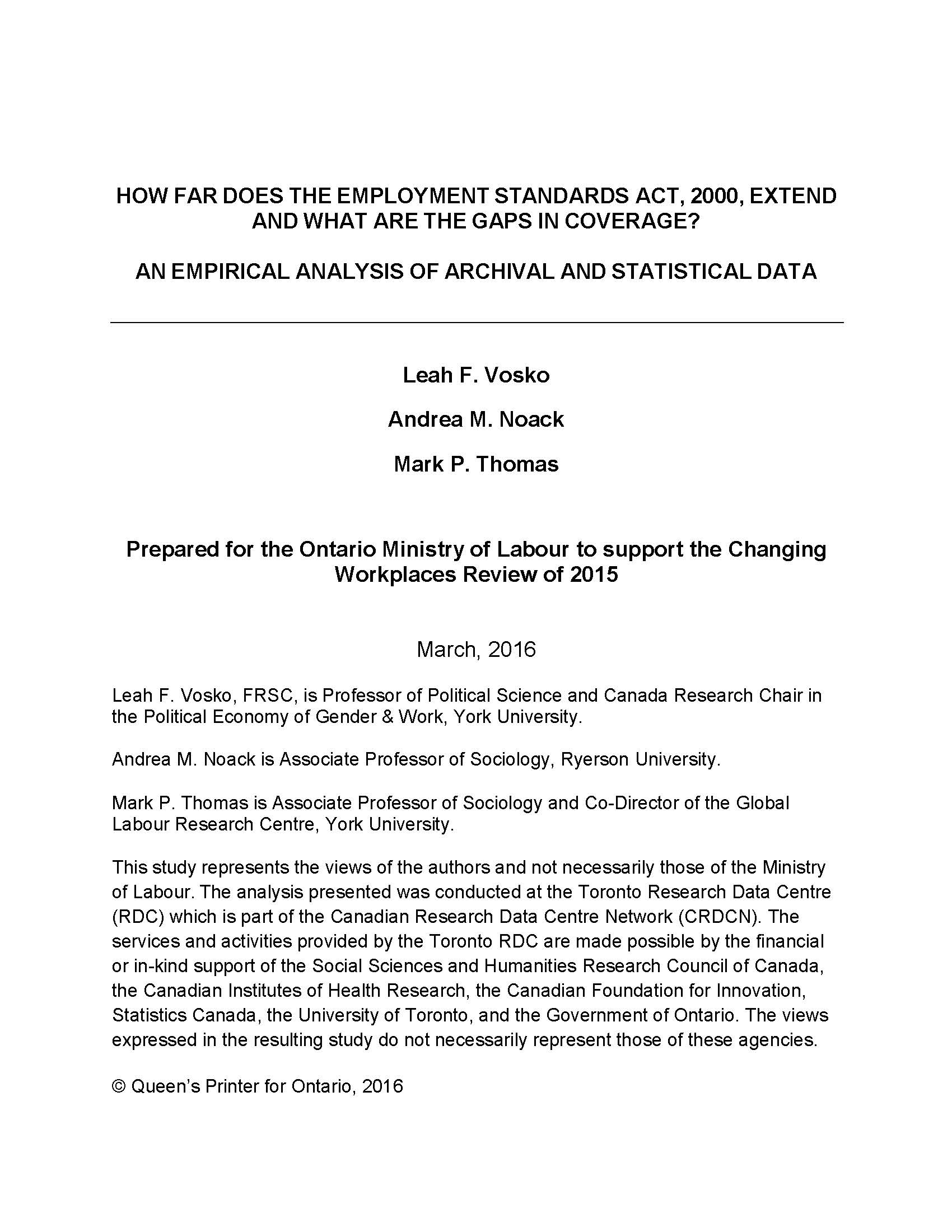 How Far does the Employment Standards Act, 2000, Extend and What are the Gaps in Coverage?: An Empirical Analysis of Archival and Statistical Data
How Far does the Employment Standards Act, 2000, Extend and What are the Gaps in Coverage?: An Empirical Analysis of Archival and Statistical DataLeah F. Vosko, Andrea M. Noack, and Mark P. Thomas (March, 2016)
This report is prepared for the Ontario Ministry of Labour to support the Changing Workplaces Review of 2015.
-
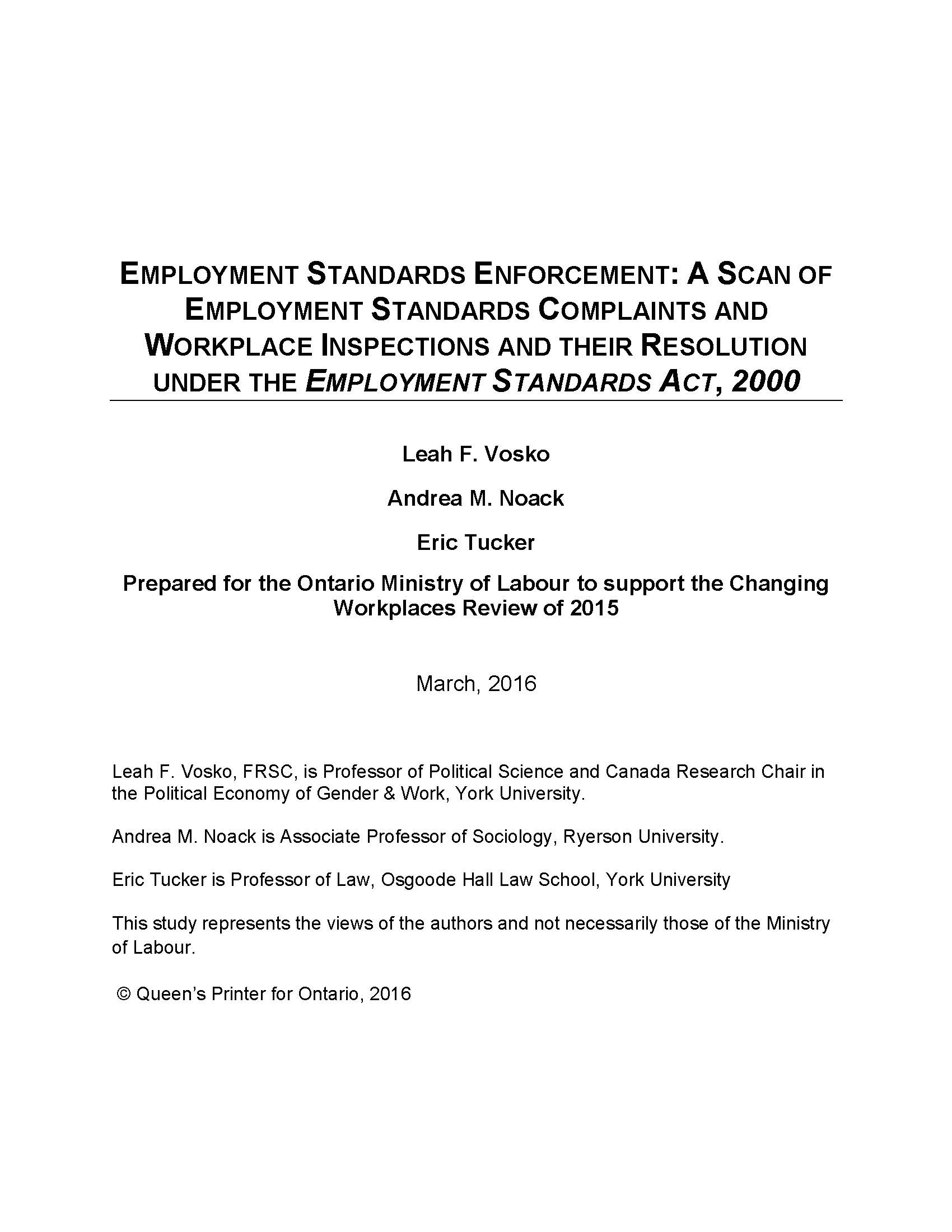 Employment Standards Enforcement: A Scan of Employment Standards Complaints and Workplace Inspections and Their Resolution under the Employment Standards Act, 2000
Employment Standards Enforcement: A Scan of Employment Standards Complaints and Workplace Inspections and Their Resolution under the Employment Standards Act, 2000Leah F. Vosko, Andrea M. Noack, and Eric Tucker (March, 2016)
This report is prepared for the Ontario Ministry of Labour to support the Changing Workplaces Review of 2015.
-
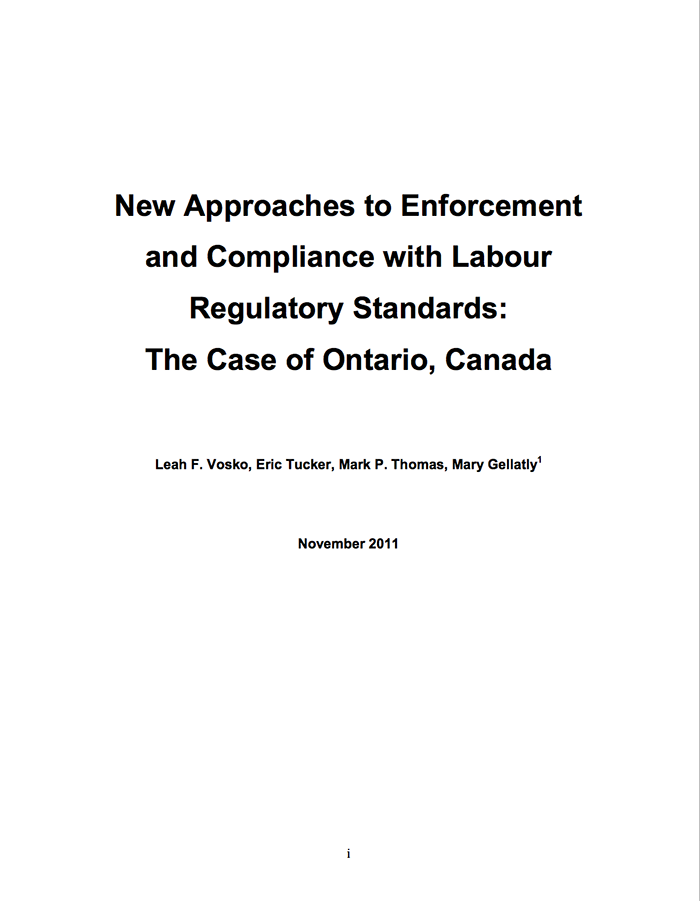 New Approaches to Enforcement and Compliance with Labour Regulatory Standards: The Case of Ontario, Canada
New Approaches to Enforcement and Compliance with Labour Regulatory Standards: The Case of Ontario, CanadaLeah F. Vosko, Eric Tucker, Mark P. Thomas, Mary Gellatly. Law Commission of Ontario Report.
This report maps current enforcement and compliance practices in Ontario’s regulation of employment, particularly as they relate to precarious employment. It evaluates the effectiveness of Ontario’s enforcement regimes and identifies and evaluates potential reforms to improve regulatory effectiveness.
-
 Precarious Jobs in Ontario: Mapping Dimensions of Labour Market Insecurity by Workers’ Social Location and Context
Precarious Jobs in Ontario: Mapping Dimensions of Labour Market Insecurity by Workers’ Social Location and ContextAndrea M. Noack and Leah F. Vosko
In this report, commissioned by the Law Commission of Ontario, the authors use data from Statistics Canada’s Survey of Labour and Income Dynamics to map the prevalence of precarious jobs in Ontario between 1999 and 2009.